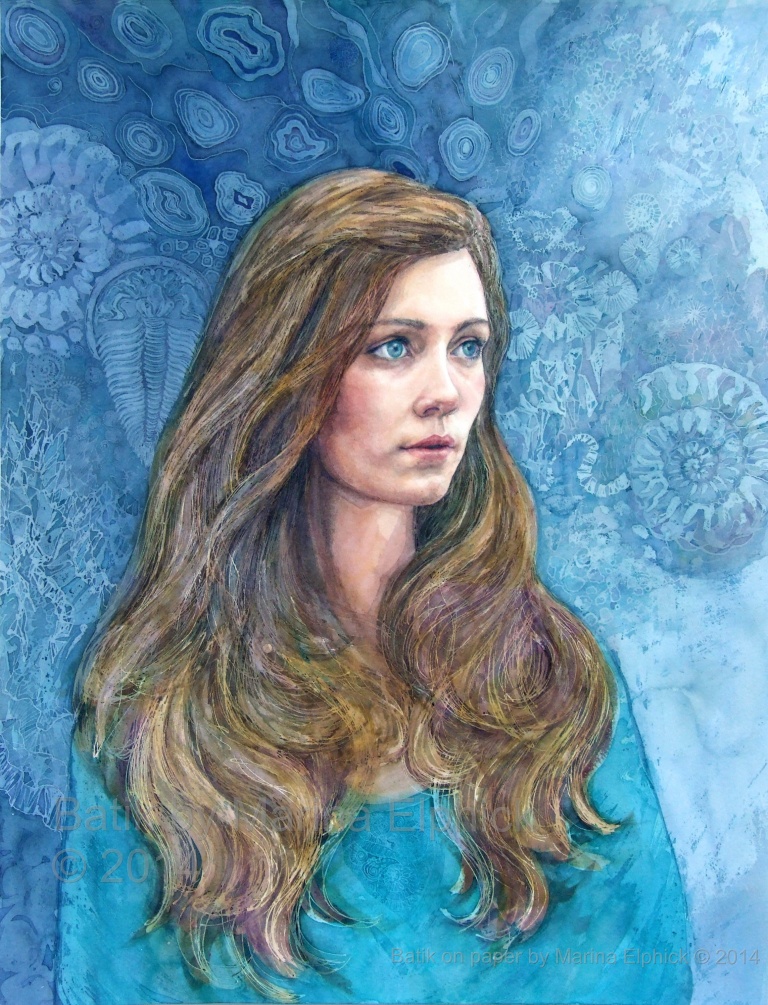
modelled by Bobby.
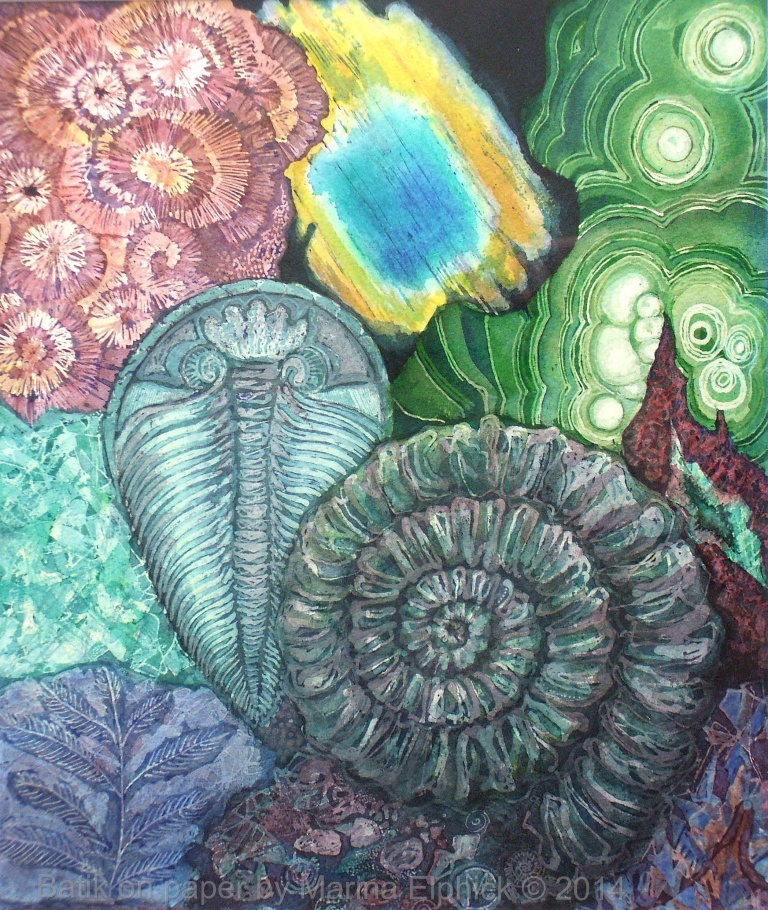

Batik on paper is something I have only relatively recently experimented with. I’ve been working with cold water dyes and inks on a variety of robust watercolour and cotton rag papers, using cantings and brushes to apply the wax. These papers take the dye easily and don’t fall apart when wet, so allow dye to be washed back if necessary. Working on paper can have advantages, the dyes dry faster because they are on the surface only and don’t need to penetrate through, as on cotton or silk. Also the dyes can be painted on like watercolours, allowing gentle build up of tone and and blending of colours. The waxed lines are crisper edged on paper and give the work a clarity and sharpness.
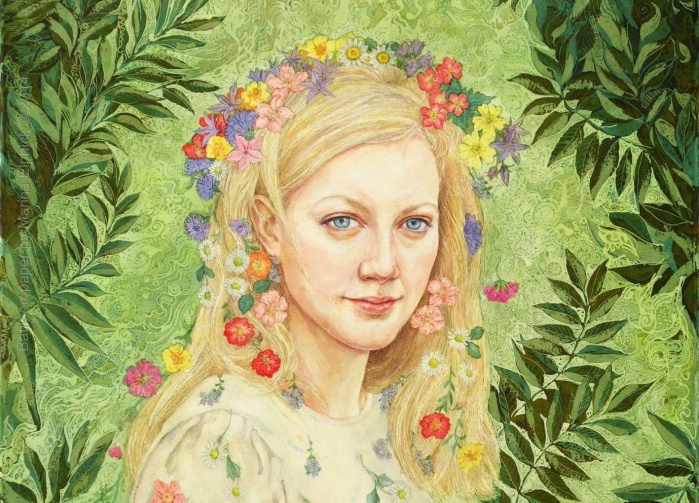
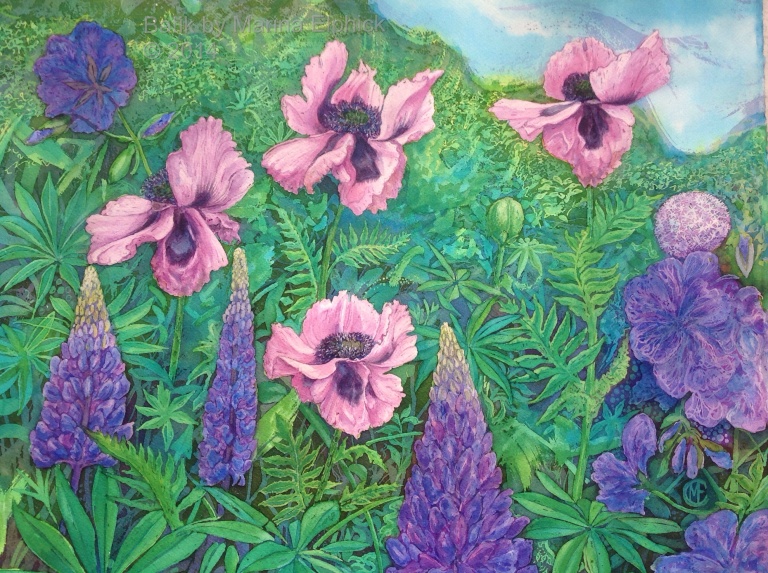
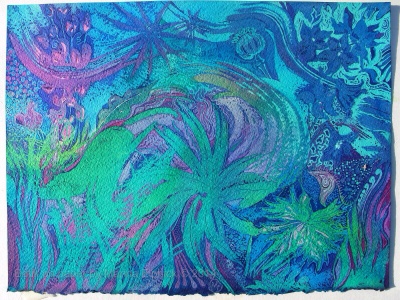
The batik process on paper loses some of the characteristic properties of batik on fabric, the obvious loss is the distinctive “crackle”, where the wax cracks during dyeing and allows thread veins of colour to seep into the tiny grooves. The “crackle ” can be manipulated on silk and cotton by crushing the waxed areas to maximise the effect, yet this cannot be achieved on paper without destroying the surface structure.

The marbled veins in Jodie’s portrait have been finely drawn in with an ink pen, a laborious task compared to the instant crackle of wax on crushed fabric in a dye bath !
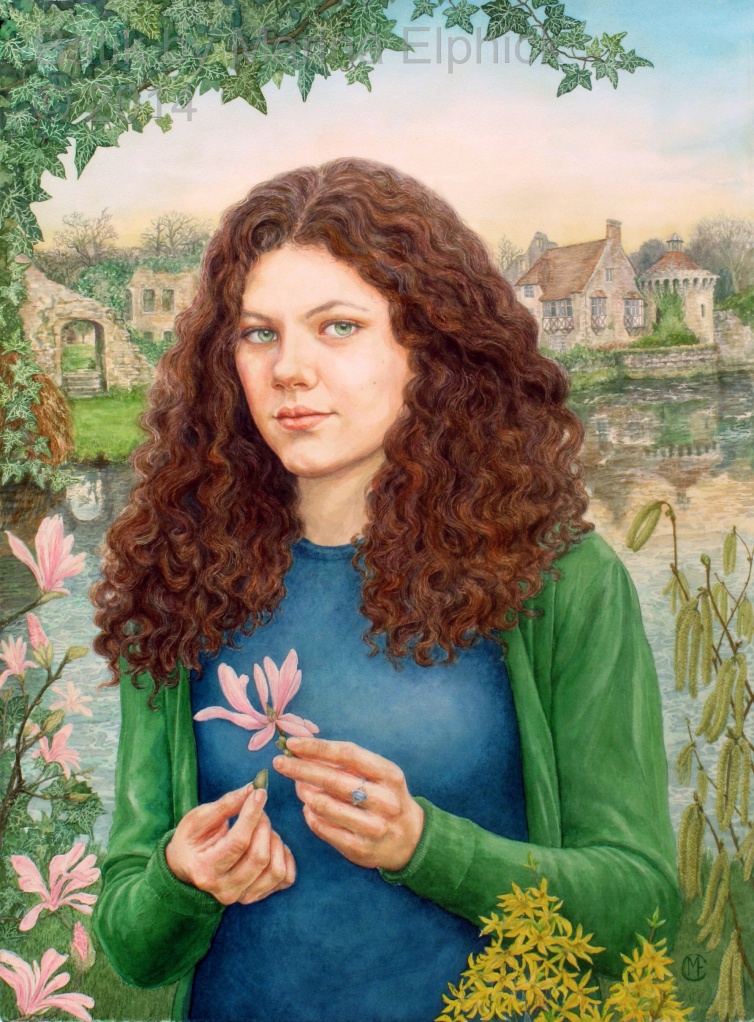

Along side hot wax resist, clear wax crayon has been used on the Bluebird portrait to create additional textures.

It is interesting to note how batik on paper enters the realm of painting, managing to shake off its association with craft and becoming a contender among traditional art mediums. Paper is perceived to present fewer problems commercially, in terms of presentation, durability and longevity. The perception that traditionally made batik on cotton is any less of an art form or less durable is a misconception, yet batik on paper manages to bridge the gap between mediums and makes it more accessible.
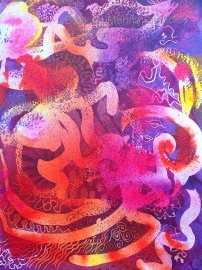
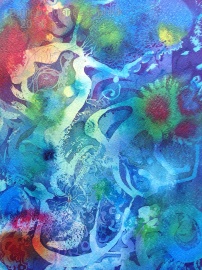
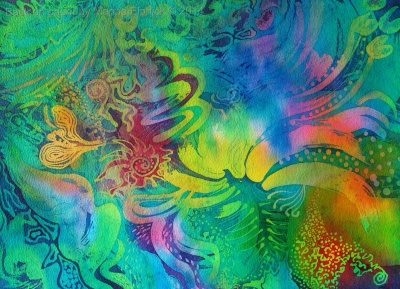
I would be interested in your views on this, everyone’s experiences and opinions are different when creating, viewing, buying or selling batik. Do you think batik is an artform or a craft medium, maybe it can be both ? Please feel free to comment at the bottom of page.

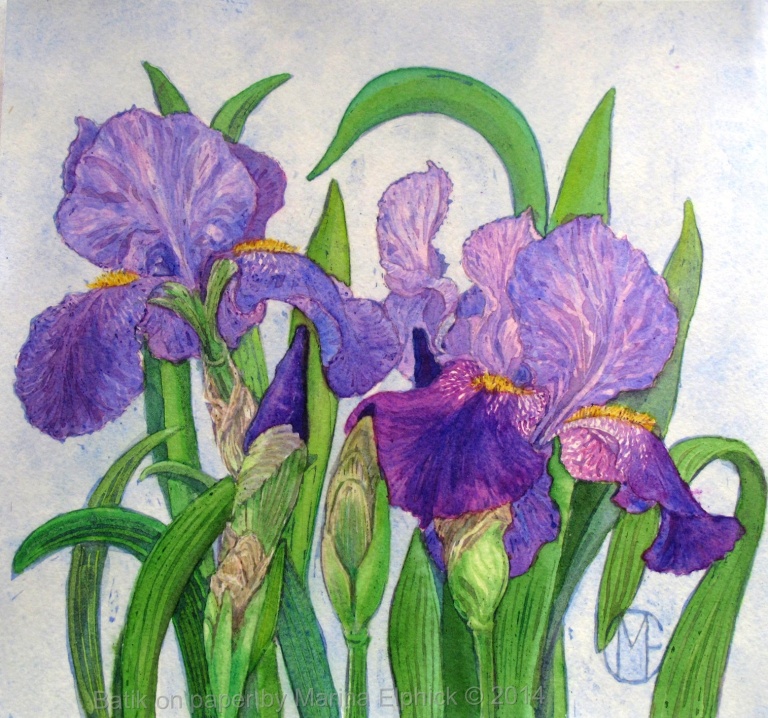
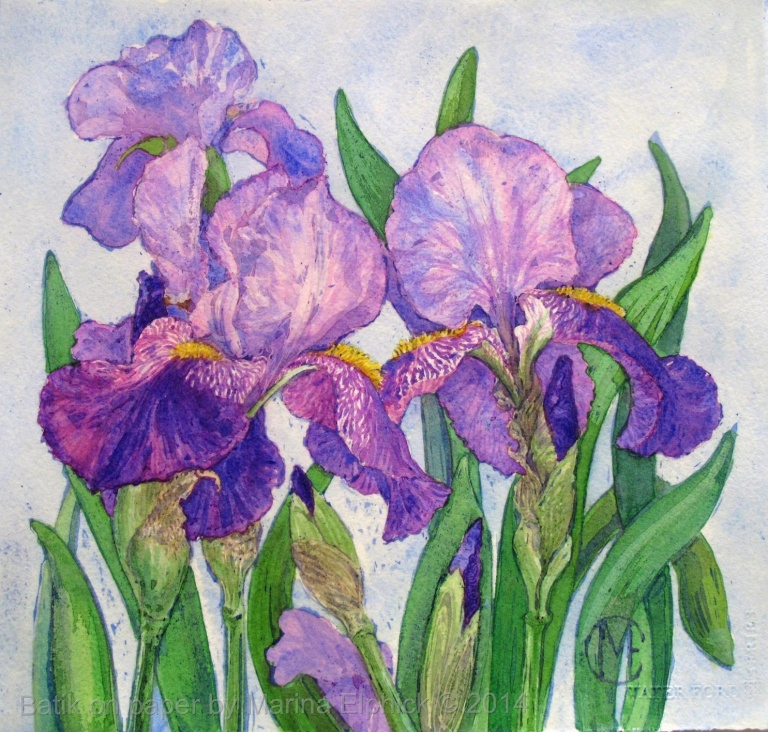

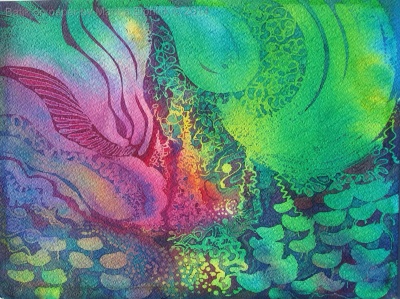
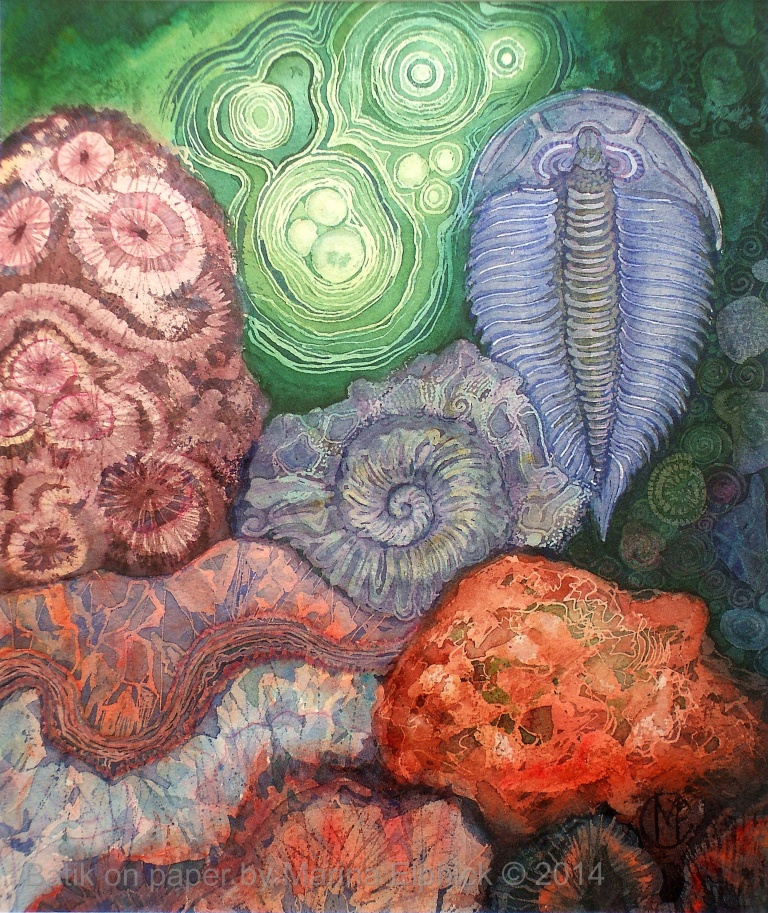

modelled by Bobby.
Please feel free to comment below.

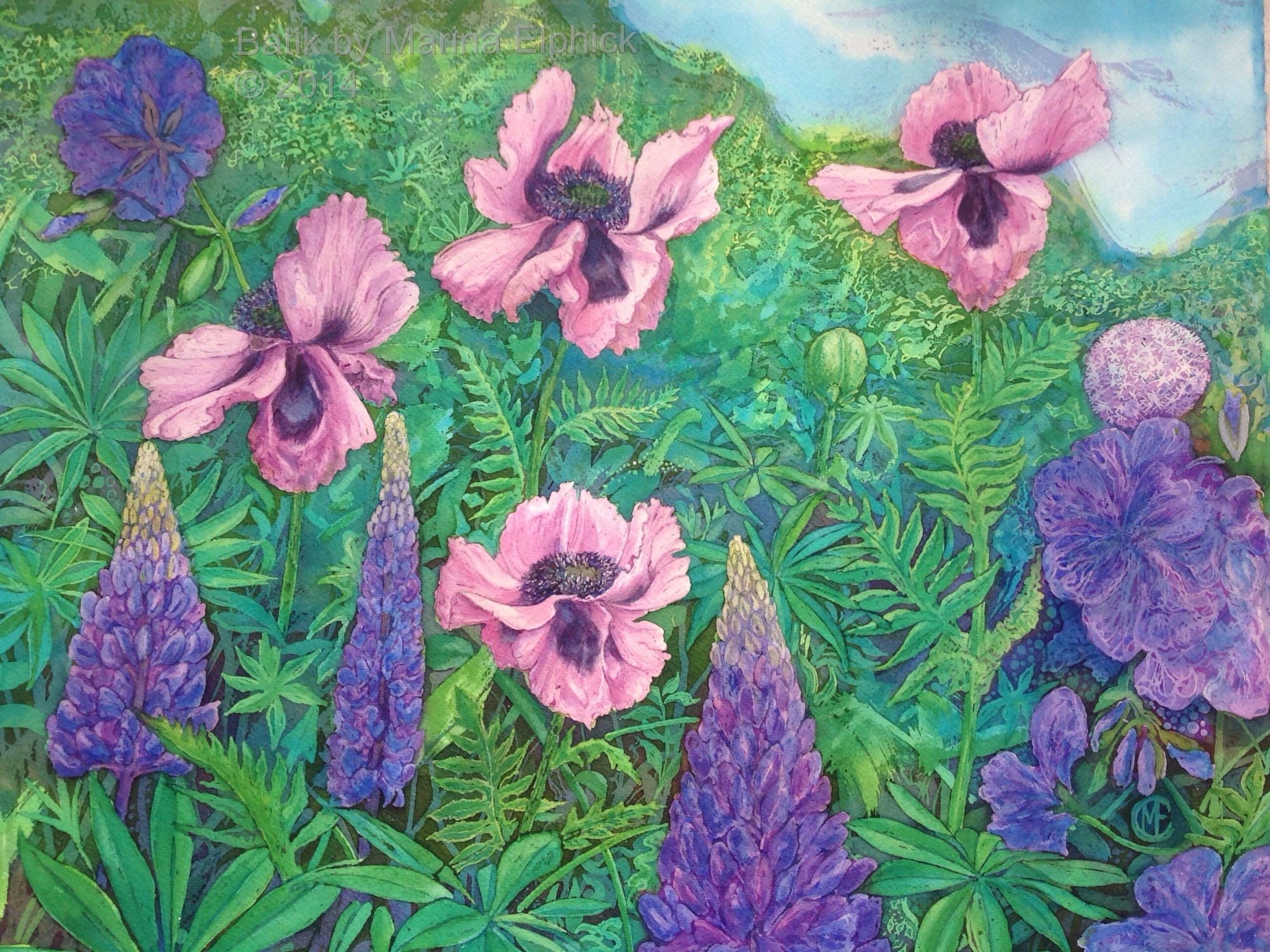

As a painter myself ,I am aware that batik on cloth may be considered a craft when used in the traditional way using sets of patterns for the imagery .When an artist is inspired by his or her own creativity, may it be abstract or figurative ,the batiks are transformed into amazing artworks .
Yet ,it may still be difficult to convince buyers and sellers alike to consider a painting described as batik as an art form and not a craft Marina your creativity and skills are simply boundless .
LikeLike
Hi Marina,
I love your flower images (Poppy garden; Lupins&Poppies) and Profusion – stunning colour, transparency and movement.
I suspect batik is considered a craft medium, because many of us have had a go at tie dying at school and therefore believe it just to be a more refined form of fabric dyeing. However, anyone who has seen the immense skill, finesse, composition etc of your work would only be able to describe it as art – you achieve the most stunning subtlety & luminosity of skin tones! People who see the large work you made for us, dont believe it is batik, they always believe it is a painting and therefore great art!!
LikeLiked by 1 person
Hi Marina, i have never worked with Batik before. As you have inspired me to try this, would you have any tips on using batik with paper as my theme is blossoming flowers and im not expireinced in this area of art.
Thanks , M
LikeLiked by 1 person
Hello Maya, batik worked on paper allows a very clean finish, as opposed to the crackle and variant degrees of resist that batik on fabric creates. On paper the wax can be applied with brushes of all sizes and cantings,which are tools used in traditional batik. WaterColours and fabric dyes can be used in conjunction on paper and the wax is used to hold areas that are to remain the colour you have applied it on to.
When painting blossom or any delicate flower, batik is a useful and sympathetic technique. The White of the paper would be your first consideration, all the highlights and pale hues would be waxed first; the the palest of pinks, yellows or greens can be applied with a watercolour brush, then waxed. Care is needed in keeping the colour light and not too saturated, building up tone in a subtle and delicate way. Batik on paper is more forgiving than on fabric, however splashes and drips can still happen, so practise on samples before embarking on a major piece of work.
I hope this is helpful.
LikeLike
I’ve finally found someone making batik on paper to a high level! I tried this about 25 years ago and am about to give it another go.
I was wondering how well it lasts on paper, how much you need to try to remove the wax afterwards, and whether you can reuse the wax.
I am especially impressed with the face in your Persephone picture.
Craft versus art? I like the Bauhaus idea that there isn’t really a distinction. Everything should be made well. If anyone is fussing about it, I really don’t think their opinions are worth bothering about 🙂 But I think the presentation is the key thing for those wanting to make a distinction. Stick it in a quality frame of the type you’d put a watercolour in, and they’ll think of it as art. Show a use for it other than aesthetic, and it will be looked down on as craft. The world is bonkers! Far more important is making quality work. I hope that craft is a big part of my art.
You use it very differently to how I think I will. I am interested how subtle the gradations in shade you’ve achieved are. I think I’ll approach it a bit as I would a woodcut, with a handful of colours and clear grading in tones- and maybe browns and grey blues like a Roman mosaic. Hmm. We’ll see. Thank you for showing your work 🙂
LikeLiked by 1 person
Thank you Tom,
I find dewaxing paper easier than fabric , in fact a small amount of wax residue left in the paper enhances the colour. I use white beeswax which is clear of colour, it gives a silk sheen to the work and a certain amount of protection to damp.
Also dyes and watercolours dry faster on paper, so the process of waxing & dyeing can be done in less time.
Enjoy experimenting !
Marina
LikeLike
Hi Marina – Just started following you on Instagram. I work with watercolor o batik on rice paper and would like to try dye. Could you tell me a bit about the dye you use and do you need to use ash etc to fix the dye? Appreciate your beautiful work and any insights!
LikeLike
Hi Kim, thanks for your message. When I batik I use Procion cold water dyes,( sometimes called reactive dyes ) using a mix of immersive dyeing and painting on dyes with a brush. With the immersive dye process I add salt to the dye to bath 10 minutes in , to help the dye penetrate the cotton , then soda ash to fix the dye after 20 minutes to fix the dye. When painting on dye I mix 5g of soda ash in with the pot of 100 ml dye solution.
Painting dye allows you to achieve a greater contrast and variety of colours; immersive dye baths create the unity seen in traditional batik and enable the characteristic crackle.
Using both dye techniques alternating between waxing allows a greater depth and range of colour and more control over the batik process.
Best wishes, Marina
LikeLike
Thanks – this is very helpful information!
Kim
LikeLiked by 1 person
Hi Marina. I have always loved your work and would now like to experiment with batik on paper.So can you please tell me what sort of paper to use and also if you will be running any workshops in the future(U>K>based!) please? Thanks! Sally.
LikeLike
Hi Sally,
good to hear from you, sorry there has been such a delay in my reply. I use good quality watercolour paper, often ones that have some cotton content like Arches Aquarelle or Khadi handmade papers. I am not running any workshops at present due to several projects on going. Generally I find there is much more freedom working on paper , dye can be used alongside watercolour and the wax will resist both. There are no tricks and nothing to lose, just enjoy experimenting !
LikeLike